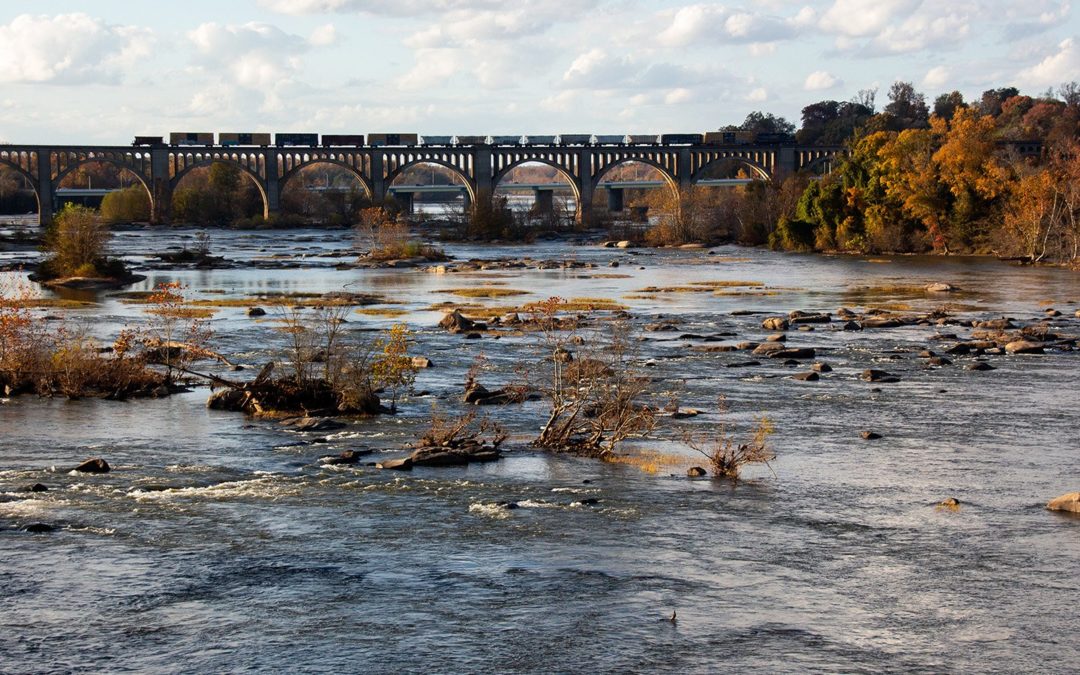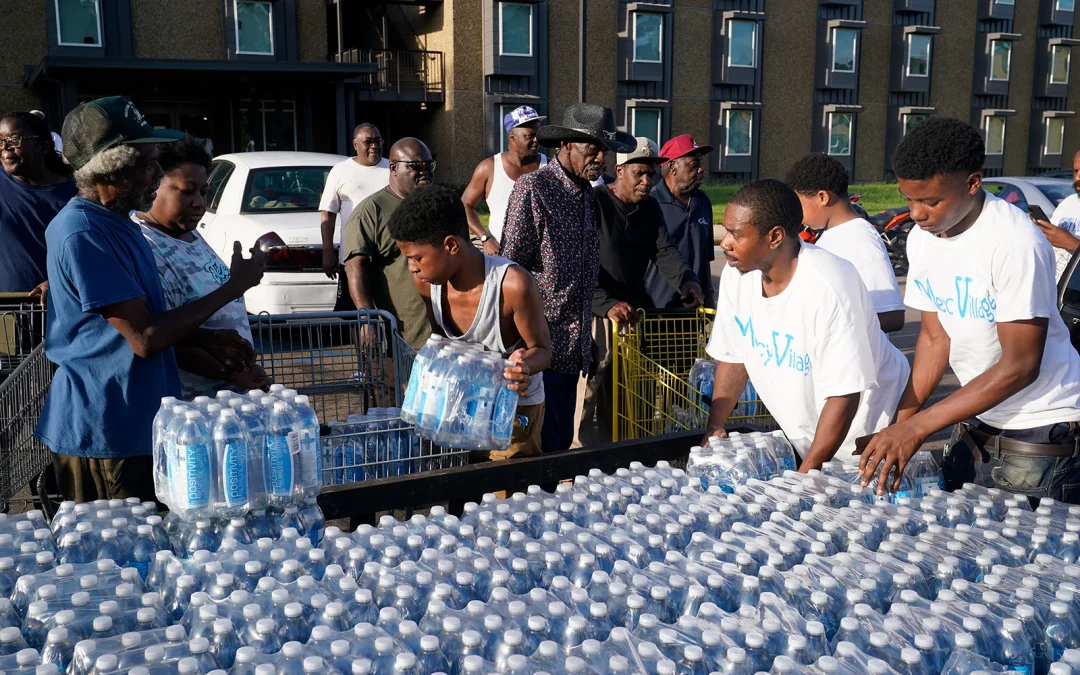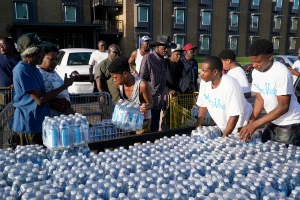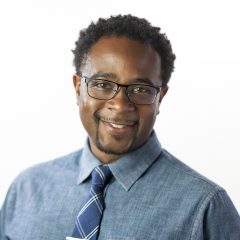
by Cassandra Carmichael | Nov 1, 2022 | Commentary, Headline News, Social Justice |

(RNS) — Water is both sacred and the cradle of life. It connects us to one another. We all have relationships with bodies of water, whether that be with the Chesapeake Bay, the Atlantic Ocean, a local creek, wetland or river or a nearby lake. These places are vital to our health and wellbeing but also help us spiritually connect.
As we celebrate the 50th anniversary of the Clean Water Act — legislation that helped clean up waterways across the nation — we must use all the tools available to ensure clean water is available in all our communities. Ensuring clean water often means properly stewarding upstream waters and wetlands. With more than 117 million people in the U.S. receiving their drinking water from public systems fed in whole or in part by intermittent, headwater, and ephemeral streams, protecting these waters is paramount.
The Clean Water Rule, which the Environmental Protection Agency put in place to designate which waterways were protected under the Clean Water Act, helps ensure safe drinking water for communities. The Clean Water Rule protects nearly one-third of all Americans’ drinking water from pollution.
Despite the reality that water is not bound to particular waterways but is connected, the U.S. Supreme Court recently heard arguments in a case that could change which waters are protected under the Clean Water Rule and eliminate certain wetlands and waters from protection. This would have severe repercussions to clean drinking water in Virginia and across the U.S.
In Virginia, we have a lot of water to protect: 249,000 miles of streams, 322,000 acres of lakes, 1,600 springs, and approximately 1 million acres of wetlands that provide flood protection, pollution filtration and essential wildlife habitat. For a state that values its lakes, streams and waterways, as well as public health, a robust Clean Water Rule is crucial.
Clean water is not a luxury. Clean water is integral to all human communities and the rest of the Earth. Which is why it makes common sense to ensure our common good through clean water protections. While clean water isn’t a partisan issue, it is a faith issue. Water is central to many faith traditions and most sacred ceremonies: washing, baptism, forgiveness. Religious traditions across the spectrum attend to justice and urge us to properly steward the Earth. In addition to our call to be faithful stewards of the Earth, our faith traditions teach us to care for vulnerable populations, including communities of color and low-income communities.
Regional studies and stories from across the country document the water struggles of these communities and demonstrate that there is much progress to be made before water justice is achieved in the United States. There are numerous instances where these communities are disproportionately burdened by water degradation, ranging from lack of clean drinking water to higher exposure to fish contamination.
The removal of clean water protections for wetlands, such as the Supreme Court is considering in Sackett v. Environmental Protection Agency, leaves too much to chance. Specifically, it puts more than 117 million people at risk for pollution and would be highly detrimental to wildlife.
Protecting clean water is a moral call. The Clean Water Rule helps us, as a country, protect one of the most important elements of creation: clean water. We have a duty to care for these essential, life-giving waters.
(Cassandra Carmichael is the executive director of National Religious Partnership for the Environment. The views expressed in this commentary do not necessarily reflect those of Religion News Service.)

by Jemar Tisby | Sep 13, 2022 | Commentary, Headline News, Social Justice |

(RNS) — C.J. Rhodes, pastor of Mt. Helm Baptist Church in Jackson, Mississippi, was grabbing lunch from one of his regular spots when the restaurant manager made an announcement to all the patrons.
“Guys, we have to shut down. We have no water pressure.”
On Aug. 29, flooding from the nearby Pearl River caused complications at the O.B. Curtis Water Plant, resulting in a loss of pressure and running water for the entire city.
At more than 160,000 people, Jackson is Mississippi’s largest city and the state capital. Schools, which had only just commenced classes, had to be shut down, and the city lacked water for even emergency services such as firefighting.
The crisis quickly made national news, and people from around the country turned their attention to Jackson seeking explanations and ways to help.
Within the city, residents quickly organized to help their neighbors and communities. At the center of these efforts stood faith leaders.
“Churches throughout the city of Jackson across denomination, class and race have engaged in water distributions at their churches or by giving water away in other ways,” said Rhodes.
His church became a water distribution site. As provisions flooded into the city from around the country, churches like his became hubs for supplying residents. Sometimes churches filled in where municipal distribution efforts were limited. They could stay open after hours to serve people who couldn’t make it to the city’s distribution sites before closing.
Jennifer Biard, lead pastor of Jackson Revival Center Church, lost water several days before the city-wide announcement. She came home and found the faucets simply didn’t work.
While dealing with her own water troubles, she led her church in providing for others in the southern part of the city where they have a campus. Throughout the crisis many water distribution sites were set up at various locations, but Biard and her volunteers went even further. They loaded up cases of water and hand-delivered them to individuals and businesses.
“One thing people don’t understand is that when you have people who are disabled, people who are without transportation, they may not be able to go out to the distribution sites,” she explained.
Individual churches were not the only bodies that got involved.
Reginald M. Buckley is the pastor of Cade Chapel Missionary Baptist Church. He is also the president of the General Missionary Baptist State Convention of Mississippi (GMBSC), an association of churches providing mutual aid to member congregations.
“There’s only so much any local church can do … (the convention) acts as a connector,” Buckley said.
His goal was to mobilize people and supplies from across the state and nation to help people in Jackson. The state convention has its own 18-wheel truck as well as an extensive network of churches and personnel they contacted to help.
“Though this is a trying time, one of the things that I am most grateful for is the unity that people are able to observe, how they are seeing pastors and churches come together regardless of race, regardless of denomination, regardless of anything that would divide. They are seeing the body of Christ come together like never before,” Buckley said.
Despite the efforts of churches and faith communities to provide relief, the water problems in Jackson are much deeper than a breakdown at the water plant.
The city had already been under a boil water notice for a month before the entire water system failed. Even after the city’s water pressure was restored nearly a week later, the boil water notice has remained in effect.
Although the water plant has come back online, the infrastructure issues remain.
“Now that the plant is up and running, water is flowing again, now we have to live with pipes bursting … We still have lead leaching from the pipes into the water. We still have the EPA saying the city has failed to do a number of things and if they don’t remedy those things, there may be federal seizure of the water system,” Rhodes said.
Given the continued failure to bring Jackson’s water infrastructure system up to date, Buckley said he is preparing for the next crisis.
“What we’re absolutely convinced of is that we’re going to be faced with this again, and not in the distant future but in the near future,” he said.
Buckley is working to build a stockpile of supplies to have on hand the next time the city loses water. “We are inundated with water right now. We are partnering with the Church of Christ Holiness to create a reserve and supplies center to house water, buckets and all kinds of supplies,” he said.
The constant lack of clean water and water pressure has worn on Jackson’s residents, 80% of whom are Black.
“We should have water,” Biard, who is white, said. “We should have water whether it’s cold or hot or snowing or raining.”
Jackson exists alongside wealthier suburbs including Madison, a community north of the city that is also the wealthiest in the state.
After years of experiencing a crumbling infrastructure alongside the comparative wealth of nearby towns, a freshman college student who is Black asked Buckley, “What’s wrong with me?”
“We assured her there was nothing wrong with her. There is something wrong with the world,” said Buckley, who tried to help his young parishioner understand that the fault did not rest with who she was but with external factors and decisions made by others.
Anticipating the need not only for material supplies but spiritual relief, award-winning gospel artist John P. Kee volunteered to perform a benefit concert in Jackson.
A friend of Kee’s in Jackson connected him to Biard, and he immediately knew she was someone who could help him set up the concert but also become an ongoing partner.
“I wanted to come in and partner with such a ministry where we could actually connect, and when I’m gone I’ll stay in touch, and I’ll be family,” Kee said.
Fixing Jackson’s pipes, water plant and other infrastructure needs requires resources that exceed what local churches can provide. Yet the lightning-quick response of faith leaders and their communities when the hour of need emerged provides evidence that help will be there in a crisis.
The show of unity by churches in Jackson may even be a sign of greater changes to come.
According to Biard, “I believe that this may be not just the initiation of a fresh start for Jackson, I believe it’s going to be a comprehensive fresh start … I believe that the Lord is getting ready to do something for Mississippi as a whole.”
To support local efforts to address the water crisis in Jackson, donate below.

Jemar Tisby. Photo courtesy Acorn Studio
General Missionary Baptist State Convention of Mississippi
Corporation of Global Community, a ministry of Jackson Revival Center Church.
(Jemar Tisby, PhD, is a historian, author and speaker. He wrote “The Color of Compromise” and “How to Fight Racism,” and he frequently writes about race, religion and politics in his newsletter, “Footnotes.” The views expressed in this commentary do not necessarily reflect those of Religion News Service.)
by Shelley Kimmons Bacote | Jul 2, 2012 | Headline News |

In late May, just before the start of summer break, an energetic group of friends were playing in a park near their grade school in a suburb southwest of Chicago. One by one, the kids climbed along the edge of a footbridge and jumped into the pond below. There was laughter and splashing until one of the children, an 11-year-old African American girl, struggled after a jump. Before her friends could help her, she sank below the surface and drowned. Forty-five minutes later, divers pulled the girl’s body from the pond. The fifth-grade honors student didn’t know how to swim.
Sadly, tragedies like the one above become almost commonplace during the summer months, as more young people seek relief from warm temperatures at swimming pools or beaches. According to the Centers for Disease Control’s (CDC) May 18 “Morbidity and Mortality Weekly Report,” the drowning death rate for African Americans is nine percent higher than that of the overall population and 116 percent higher than the overall population among those aged 5–14 years. Why is this?
Water safety experts agree that several factors can contribute to drownings in any demographic, including lack of supervision, failure to wear life jackets, absence of pool barriers, etc. However, the main reason that continues to emerge with regard to African Americans is the lack of swimming ability. And, since the American Academy of Pediatrics’ 2010 Technical Report on the Prevention of Drowning revealed the majority of drowning incidents resulting in the death of an African American child were more likely to happen in a public pool, often at a motel or hotel, parents should be particularly mindful of possible risks associated with water-related activities during upcoming summer trips. While it’s important to discuss what can be done to change these disturbing statistics, let’s first examine why many African Americans haven’t learned how to swim.
Why Don’t More African Americans Know How to Swim?
Agnes Davis, owner of Swim Swim Swim I Say, a swim company located in New York’s Harlem/Upper Manhattan area, believes some African Americans haven’t learned how to swim because “there’s a generational influence.” In other words, if a person’s parents or grandparents never learned how to swim, they are less likely to learn, asserted Davis, who gives lessons to children and adults. Lee Pitts, the Senior Aquatics Director for the Boys and Girls Club of Broward County in Florida, agrees. He said, “There is no generational consistency in terms of people handing down (swimming) skills from generation to generation.” For instance, while African-American parents often pass down their love of football, basketball and track and field, this doesn’t tend to happen with swimming. Harriett Navarre of the USA Swimming Foundation’s “Make A Splash” program confirmed these assertions. “Make A Splash” is an initiative that aims at providing water safety education and swim lessons to families at an affordable price. Navarre revealed, “According to the research studies the USA Swimming Foundation conducted via the University of Memphis in 2008 and 2010, the primary deterrent to learning to swim is family history. If a parent does not know how to swim, there is only a 13 percent chance that a child in that household will learn how to swim.”
Kathy Jordan of the Nile Swim Club—an African American-owned swim club in Yeadon, Pennsylvania, that’s been in existence for more than 50 years—believes “a fear of water” is another factor. Davis concurred and said, “There may have been a past drowning” that dissuaded a person from having the desire or confidence to learn how to swim. In many cases, however, no specific incident led to a person and, consequently, their family having a fear of being near or in a large body of water. The fear simply may have been passed down from generation to generation because of an upsetting story that continues to live on.
Another reason swimming isn’t as commonplace in the African American community is that many men and women have typically perceived it as one form of recreation they could either take or leave. Davis said, “There has to be a change of mindset. We don’t think it’s important. We look at swimming as a luxury; it’s not. It’s a life-saving tool.” Jordan continued, “(The importance of learning how to swim) needs to be more in the forefront of people’s minds. They don’t tend to think of it until it gets warm. It should be thought about in the fall and winter months, too. It needs to be on everyone’s mind year-round.”

SURVIVAL THRILLS: Experts say parents should make swimming lessons for their children as important as activities like ballet, piano, and Little League.
The historical lack of access to beaches and pools has long been cited as a reason why many African American children and adults don’t know how to swim. “If you don’t have access to them,” said Pitts, “you’re gonna fall behind.” While segregation doesn’t tend to keep the average African American person from swimming today as was the case in the past, access to pools can still be difficult for some. Pitts said when officials in urban areas—which don’t have “country clubs or upscale recreational centers”—are allocating resources and the resources are scarce, “swimming pools are low on their lists” because they’re expensive to maintain. This is why municipal park facilities with pools and independent, neighborhood swim schools are so valuable to their communities.
An additional factor that should not be overlooked was mentioned by both Pitts and Davis—hair upkeep. The thought of getting water and chlorine on hair that’s been recently relaxed or otherwise straightened is reason enough for many African American females to avoid pools and beaches.
But maintaining a hairstyle should not be an excuse for avoiding something as important as water safety, said Davis. She is also saddened by the fact that people will purchase “the best new sneakers, cellphone, or jacket, but aren’t willing to spend money on swim lessons.
Pitts expressed a similar frustration. While activities like ballet, piano and Little League are fun, he said, “we need to allocate a set amount of money” for swim lessons. “We should make sure we put just as much emphasis on swimming as we do on reading, writing, arithmetic, and science. … It’s not a luxury. It’s not a sport. It is a necessity.”
Make Learning How To Swim A Priority
Swimming must become a priority within the African American community in order for it to become more commonplace. Navarre said, “We now know that by teaching kids to swim, we are, in effect, increasing the chances that their kids will learn, and their (grandchildren, too).” And, Pitts suggests, “Get ‘em early.” He says it will be harder to get them into swim lessons once they “get up to around 13-14 years old” because, at that time, they might have other sports competing for their attention or be experiencing physical changes that make them more embarrassed about wearing a swimsuit. “Capture (your kids) before all of the other stuff kicks in,” he advised.
Kim Burgess is another big advocate of teaching kids how to swim. The executive director of the National Drowning Prevention Alliance (NDPA), Burgess believes preventing kids from drowning is her “ministry” and “calling from God.” She said, “It is not likely a child will die playing basketball or football or soccer, but if they don’t know how to swim they will surely die if (they have a problem in water and) no one is around to save them.”
Navarre revealed, “Many of the American Red Cross’ Learn-to-Swim providers have partnered with ‘Make a Splash’ to offer Parent and Child Aquatics lessons. This is a way for children to acclimate to the water with their parent. Children can start in these classes as early as six months.” This is around the same age Kay Smiley, Aquatics Program Specialist at the YMCA of USA, said parents can begin enrolling their children in “Y” swim classes. Visit YMCA.net to find a location near you. Jordan revealed, “We get them around two years old and, by three years old, they’re jumping into the 11-foot end.”
Which Type Of Instruction Is Best?
Experts differ in their opinions about whether individualized- or group lessons are better. Jordan said, “If (one) parent is proficient, that’s fine. The one-on-one works really well.” This would also work if a relative is a competent swimmer, as was the case for Davis, who was “first taught by a family member” and doesn’t “have any recollection of not swimming.” One resource for parents desiring to teach their children how to swim is Pitts’ DVD, “Waters: Beginner’s Swim Lessons for Adults and Children with Lee Pitts,” which can be obtained at LeePitts.com.
Smiley said, “For children aged six to 36 months, the parent or guardian is the first and best choice for teaching a child how to swim.” This is why the YMCA offers Parent/Child Aquatic classes; they offer the best of both worlds—parental involvement plus the guidance of a certified teacher. Smiley said, “The program helps strengthen and support families and offers an opportunity for the parent to spend uninterrupted time and bond with the child.” However, by age three, she said children “usually begin to socialize and are old enough to attend classes without a parent or caregiver.” At this age, according to Smiley, they should be able to follow simple instructions, communicate with adults and other children, cooperate with the instructor and understand what’s expected of them. In most cases, however, parents will probably seek out a certified swim instructor. Navarre advised, “Children must absolutely learn from a certified lessons provider. If you are not a certified provider, enroll your child in lessons.”
When attempting to select a swim class for one’s child, Smiley suggests parents first get recommendations from someone they trust then observe a class. She advised, “Stay through an entire class and watch how the adults interact with the children. Notice how behavior is managed and keep track of how much class time is spent sitting on the edge or waiting for a turn. See if the class is well organized and make sure there is at least one lifeguard on duty and a swim instructor actively watching the class. If you don’t have time to observe a class, ask a supervisor to describe the focus and class activities. Find out how children are placed in the proper class and what will be expected of your child,” said Smiley. Be sure to also “check the instructor’s credentials.” Inquire about staff training and certifications, as well. YMCA of the USA recommends instructors have current “Y” Swim Lesson Instructor, CPR Pro, First Aid, and Emergency Oxygen certifications. Experts also warn parents to make sure the ratio of students to teacher is appropriate. Navarre explained, “If the child is in a group lesson setting, we recommend that there be no more than six children for each instructor.”
When contemplating whether you’ll be able to afford lessons, remember that “Make a Splash” partners with more than 500 Learn-to-Swim providers across the nation who commit to providing a percentage of their lessons for free or at a discounted rate and/or providing their communities with free water safety education. Your YMCA, local swim schools, and neighborhood recreational centers also may offer scholarships.
Establish Rules Before You Need Them
In addition to learning how to swim, experts agree parents and children must also have water safety rules in place. That means, they need to know how to keep themselves safe whenever they are in or near a pool or a natural body of water, such as an ocean, lake, river, pond or stream. A common tip for parents is that they must be present when children are in water. Navarre said, “Children need to know that they cannot get into a pool or body of water without asking permission.” Once they have that permission, they must be supervised. Smiley said, “Parents’ constant active supervision is key to a safe outing around the pool and/or water.” This includes keeping children “within arms reach at all times” and never leaving them alone for any reason. Parents also shouldn’t assume another adult is watching their child. This can be accomplished by always having a designated “Water Watcher” who isn’t texting, reading or drinking alcohol. Share these tips with babysitters, nannies, grandparents, and anyone else who watches your children.
Dr. Julie Gilchrist of Centers For Disease Control (CDC) warned that “inappropriate supervision” can lead to drowning before you realize what happened. She said, “Parents don’t realize drowning can happen very quickly and very quietly.” She revealed, “A child could’ve already experienced irreversible brain damage” in the time it takes for an emergency response team, such as 911 paramedics, to arrive. The CDC’s report on unintentional drownings revealed nonfatal drowning injuries may result in long-term disabilities such as memory problems, learning disabilities, and loss of basic functioning.
Navarre said children and adults also need to get into the habit of making sure a lifeguard is on duty. Smiley added, “When arriving at the beach, the water park or pool, find a location near a lifeguard.” Jordan agreed and said, “Obey the lifeguard. They have the ability to see what’s going on (in the water).” Since municipal beaches and community pools are officially open for the summer, spotting a lifeguard at those places should be easy. However, finding one in the hotel or motel during your family vacation may be difficult. Kathleen Reilly, the Pool & Spa Campaign Leader at the Consumer Products Safety Commission, said lot of hotels and motels have pools, but “you swim at your own risk.” She said, “They won’t often have the budgets to have lifeguards present. So, parents have to be vigilant.”
Another rule parents should have is that everyone in the family must learn basic cardiopulmonary resuscitation (CPR) techniques. The CDC’s report indicates that, the more quickly CPR is started—as in the case of a bystander attempting to help a drowning victim—the better their chance of survival. The American Red Cross offers CPR classes in different locations around the country. Visit the Red Cross to find a class near you.

SPLASH CONTROL: Parents shouldn’t assume another adult is watching their child, say safety experts. Always have a designated “Water Watcher” who isn’t texting, reading or drinking alcohol.
While these tips are great for moms and dads with children of all ages, they will likely end up providing the most amount of reassurance to parents of grammar school- or middle school children who are old enough to have play dates or sleepovers with friends. Gilchrist said, “When kids are five to 14 years old, they “spend more time at their friends’ houses,” so it’s harder to monitor their activities. It’s even more difficult for parents of teens to monitor them, so additional rules may be required. For example, even though teens aren’t legally permitted to consume alcohol, drinking is often associated with drowning incidents involving them. According to the United States Lifesaving Association website, alcohol can impair swimming ability and judgment, which may cause them to take risks they wouldn’t otherwise take.
So, if your child hasn’t yet learned how to swim, make sure they learn how this summer. Learning how to swim could save his—or someone else’s life—and may have additional practical applications. Smiley said, “After learning all the strokes and safety skills, people can move on to learning how to play water polo, synchronized swimming, skin diving and snorkeling and competitive swimming.” Pitts stated that equipping a young person with the ability to swim could also lay a foundation for them to have a career that’s hinged upon a person’s ability to swim well, including marine biology or underwater photography. He also commented that learning how to swim would open up additional doors to someone who goes into one of the armed forces.
If your child’s school doesn’t have an aquatics program, consider contacting the principal to see if you could help create one. Navarre said, “There are many school districts that are partnering with swim lesson providers and blocking off a few hours a week to take students to swim lessons during the school day. If every school district could implement a program similar to this, then every child would receive the opportunity to learn the life skill of swimming.”
Perhaps your church would also allow you to create a swim club. Jordan said churches “block out time” at her swim school and divide their reservation into both recreational- and instructional time. Another option, according to Davis, is to rent pool time at a local college and hire a swim school to bring in instructors to give church members lessons. Churches could even invite their pastors to get involved in promoting the importance of learning how to swim, said Gilchrist. In the event church members can’t afford swim lessons, Navarre—who recommended churches consider providing transportation for members to get to and from swim lessons—said they could hold fundraisers to raise money for scholarships to make lessons more affordable.
And, if you’ve never learned how to swim, consider taking lessons. Navarre said, “If the parent does not know how to swim they should join their child in lessons. There is no way they will be able to help a child in danger if they, themselves, do not know how to swim.” Smiley added, “Parents, children and even grandparents” can take lessons. “It’s never too late,” she said.

Wade (Safely) in the Water
Check out these websites for more information on water safety and diversity in swimming.
• Diversity in Aquatics Drowning prevention/Diversity in swimming.
• International Water Safety Day Water safety/Drowning prevention.
• Swim For Life Drowning prevention.
• USA Swimming Drowning prevention/Diversity/“Make A Splash” tour with Cullen Jones.









